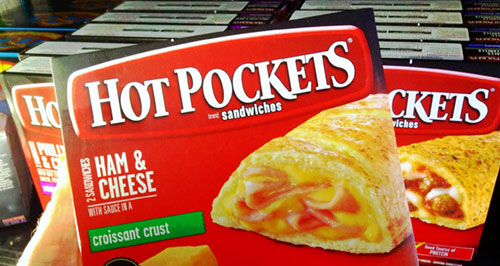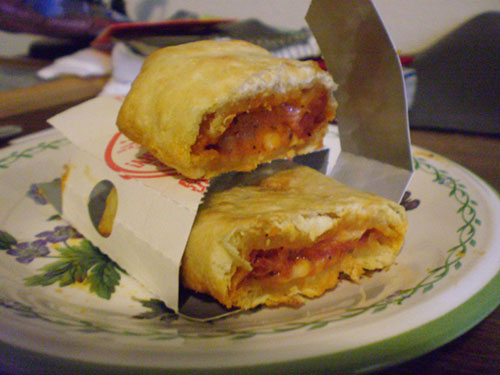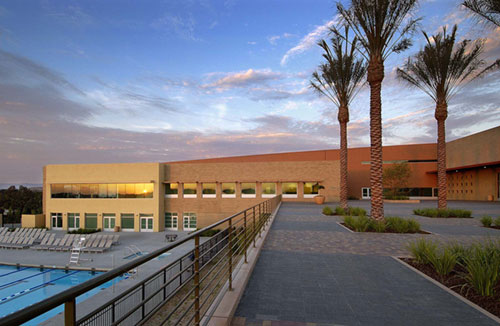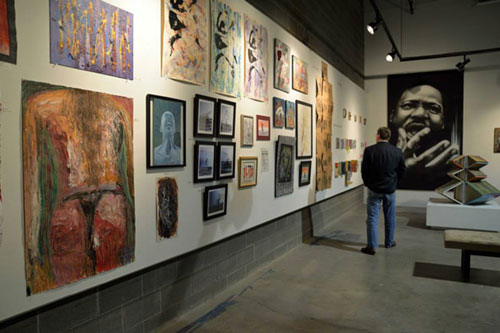Hot Pocket Diaspora
Jim Gaffigan jokes aside, Hot Pockets made a family of expat Iranian Jews into billionaires—billionaires who have jumped into philanthropy with both feet.
320

How a Belgian waffle manufacturer brought the Hot Pocket to life
Before it created the miniature calzones that represent their biggest gift to popular culture, Chef America got its start with Belgian waffles. In a patent filed in 1977 and approved in 1983, the company noted that it had figured out a way to take the guesswork out of a breakfast product that was incredibly difficult to make—and it did so, by making it ahead of time, freezing it, and then making it easy to microwave.
"Although there have been many attempts to do so, Belgian waffles are not utilized in restaurants except in some rare specialty houses, because of the difficulty in making the batter and maintaining its freshness as well as in properly cooking the same," the filing stated.
It was actually pretty innovative and probably made brunches a lot less painful for many restaurants, but it was nothing compared to what was to come.
Chef America's start in the late '70s came at a time when it was unclear whether the microwave would take over the U.S. market in the same way the television, a similarly rectangular device with dynamic-changing ramifications, had. According to the Bureau of Labor Statistics, just 1 percent of American households owned a microwave in 1971, and by their estimates, the number had barely improved to just over 10 percent of households by the late 1970s. But Chef America came around during a tipping point, where the creation of dedicated microwaveable food could have an impact on the appliances we buy.
It took a little while for the Colorado-based company to perfect its approach, however. Those Belgian waffles may have proved a good starting point for the company, but they weren't conversation-starters that could be sold in commercials. Fortunately, the company was willing to experiment, and those experiments led to something totally unique.

Launched in 1980 as Tastywich, the product that became known as the Hot Pocket was the brainchild of two brothers, Paul and David Merage. At the time the duo formed the company in 1977, Paul had existing retail experience, having spent time with Maxwell House and Hunt Wesson as a marketer.
During his time as a marketer, Paul pondered the trend of two working parents, along with the tendency of people to graze, and the growing desire for portable foods. Hot Pockets, as a marketing strategy, effectively combined these three concerns into a single hand-held product.
It wasn't easy, though. See, microwaves aren't perfect, and what works for a Belgian waffle doesn't work for crispy bread. In fact, the Merage brothers struggled to perfect the formula of the bread to ensure it didn't have the texture of either cardboard or rubber. (When they did, they patented the hell out of it, of course.)

(Wikimedia Commons)
The secret to ensuring a crispy bite is in the Hot Pocket's sleeve. The gray surface in the innards of that sleeve is a plasticky metal film called a susceptor. This film basically takes the waves being pushed out by your science oven and captures them, turning the entire sleeve into a tiny broiler, heating up the frozen foodstuff in a couple of minutes, and ensuring that the pocket is heated somewhat consistently.
(Well, somewhat. It often is burning hot on the outsides and cold in the middle, as Jim Gaffigan would tell you.)
Belgian waffles helped Chef America get into restaurants, but it was the rebranded Hot Pocket, which launched in restaurants in 1983 and later made the move to retail outlets, that made the Merage brothers rich.
By 2002, after the company had launched numerous variations on the original idea, Nestlé was knocking on Chef America's door, and the Merage brothers answered the call—agreeing to a buyout worth $2.6 billion, one that made the brothers rich beyond their wildest dreams.
Paul Merage, who served as Chef America's CEO, had big plans to give that money away.
"We've been given the opportunity to really share in the American dream," he told The Wall Street Journal in 2002. "We need to give back."
"I used to tell students he is a role model for what a business CEO should be, and if they have a cynicism based on what they're hearing about the Enrons and the Tycos, Paul Merage is the perfect antidote. He's a man of impeccable integrity."
— Marshall Kaplan, the onetime dean of the University of Colorado's Graduate School of Public Affairs, discussing with the Los Angeles Times his respect for Paul Merage. After selling his company to Nestle, Merage brought in Kaplan to run his charitable foundations. Merage had such an effect on Kaplan that, at the age of 68, he left his tenured position at the University of Colorado to help Merage give away his money to worthy philanthropic causes.

Merage Jewish Community Center of Orange County. (via LPA, Inc.)
How Hot Pockets helped fund efforts to keep Jewish culture thriving in Southern California
The Merage family is currently the 139th-richest family in the United States, according to Forbes, and that wealth has helped the family become major philanthropic figures. Much of that philanthropic interest has gone back into the culture that they left behind before inventing the Hot Pocket.
Not long after selling his company, Paul Merage made his way to Southern California, where a sizable population of Persian Jews moved during the time of the Iranian Revolution in the late 1970s. It was a good fit for Merage; he left Iran for the United States while Mohammad Reza Shah Pahlavi was still in charge, but much like the roughly 50,000 Persian Jews who came to Southern California after the Shah was removed from power, he was separated from his homeland. This phenomenon is called a diaspora, and it's something closely associated with Jewish culture.
Paul's move to Orange County actually caught the Jewish community off-guard, to a degree. When the Merage Jewish Community Center of Orange County opened in Irvine in 2004, some of the names on the donor lists—Andre and Katherine Merage, the parents of the Hot Pocket inventors—were unfamiliar to the locals.
While the couple may have been an unknown to the local Jewish community, they played an important role in their center's creation. It was Andre (who died in 2001 before the completion of the community center), who put Paul on the plane from Tehran to the United States as a teenager in the late '50s, a move that proved fateful for the family.
The campus is named for Anaheim Ducks owner Henry Samueli, but the community center located on that campus where everyone goes is named for the Merage family. And it was Paul who was the driving force for that strategy.
"Paul is very thoughtful and has a well-defined strategy for his philanthropy," noted Ralph Stern, who chaired the committee that built the community center, in comments to the Jewish Journal in 2004.
The strategy is one that Paul has followed through on ever since the sale of Chef America went through. He's associated with the Merage Institute, a nonprofit that's meant to encourage economic growth between Israel and the United States.
"I knew that I wanted to do something meaningful," he said in an interview with the PARSA Community Foundation. "And the way my mind works, which is how it was in business, I felt that if I could do something that was unique, it would be better than just doing what everybody else was doing."
Not to be outdone, David's side of the Merage family is associated with three generations of charitable foundations.
"Our philanthropic investments are focused on social change and result in children, families and communities improving the quality and circumstances of their lives," the Merage Foundations website states. "The Merage legacy demonstrates a strong commitment to their communities, their Jewish heritage, and their family."
Now, keep in mind, when reading about this, the really crazy thing about this whole state of affairs: Hot Pockets did this. It set the stage for the Merage brothers to spend the second halves of their lives donating money and time to causes they deemed important.

RedLine art gallery in Denver. (via RedLine's Facebook page)
It allowed Paul Merage to donate $30 million to the University of California Irvine, where the graduate business school is now named after him. It allowed David Merage's wife, Laura, to open a major art center in the Denver area. And it allowed the Merage Foundation to take steps that ensure that Iranian Jews, few of whom actually still live in Iran, had their culture properly represented in Israel and elsewhere.
It's a fascinating philanthropic role to play, and it's something that Hot Pockets made possible.
When Nestlé inevitably moved the Hot Pockets headquarters from its longtime Colorado home base a few years ago, the local alt-weekly couldn't even be bothered to snark at the news, Gaffigan-style. The product's benefit to the community was just too hard to ignore.
"While Colorado is losing jobs, a corporate headquarters, and its Hot Pockets claim to fame, at least the invention has left a warm legacy in Denver," Westword cofounder and editor Patricia Calhoun wrote in 2012 blog post, which does not mention Jim Gaffigan's name once.
And if Calhoun or someone else did make the joke, it'd be understandable. Hot Pockets aren't a perfect food. When people talk about how awful and preservative-laden frozen food is, they're usually thinking about Hot Pockets. (Nestlé is trying, though.) Its ingredient list is long and scary, and it has been the subject of embarrassing recalls in recent years. It is not healthy, but it is fairly cheap.
As a piece of nutrition, you most certainly could do better. But as a cultural product, a piece of nostalgia, and a way for a family to make a couple billion dollars, I'm willing to give it a pass. It may have ruined our diets, but it's helped inspire a lot of good.
:format(jpeg)/2018/01/p2db366oyn7iq6i35b1v.gif)
/2018/01/p2db366oyn7iq6i35b1v.gif)

/uploads/ernie_crop.jpg)